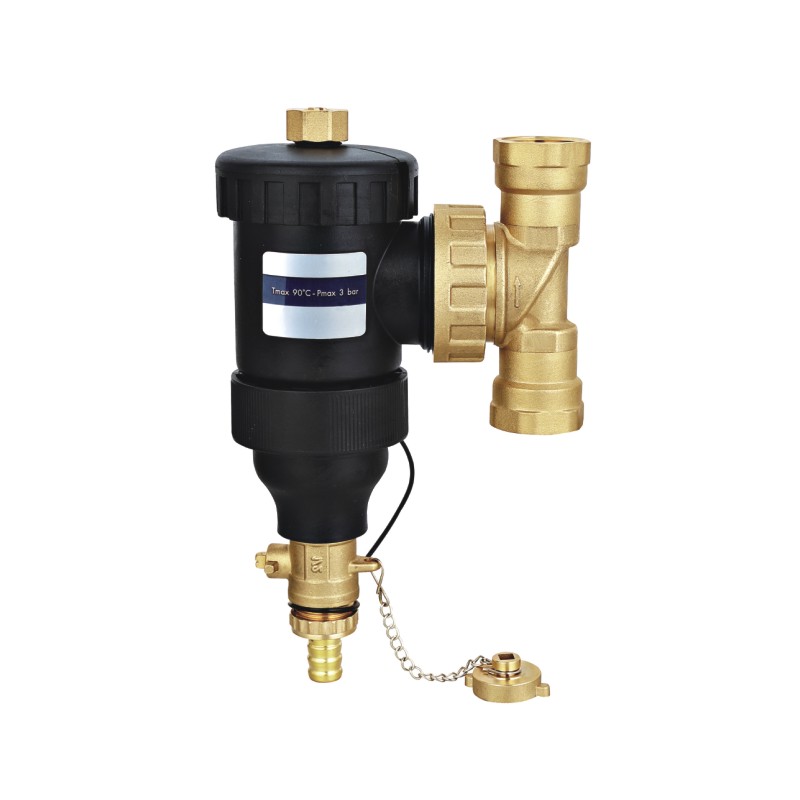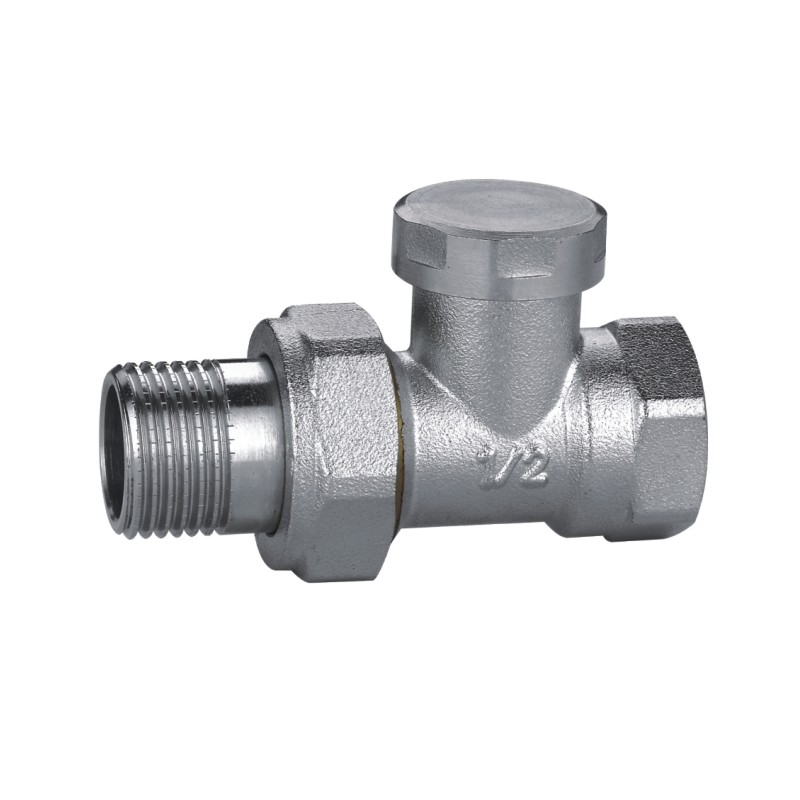By Timothy Dale and Katelin Hill | Updated Nov 10, 2022 5:05 PM
We may earn revenue from the products available on this page and participate in affiliate programs. 2 Ball Valve

Chances are, there will come a time when you’ll have to turn off the water supply to your home: You may need to do so for a scheduled plumbing repair, or before leaving on a long trip. Then there are the emergency situations, such as when a pipe bursts somewhere behind the drywall or your bathroom is flooded with water, when you’ll need to cut the water off—and fast. Even if repairs or emergencies haven’t come up yet, it’s still important to know where the main water valves are and how they function: Closing and reopening them periodically will prevent them from getting stuck in place, and will give you an opportunity to inspect them for corrosion or broken connections.
There’s no one universal spot in every house where water supply valves are located, so it could take some time to find them—time that you won’t have if water is rapidly soaking through the second-floor ceiling. Before there’s any urgency (or water all over the floor) at your place, consider familiarizing yourself now with how to turn off the water supply. Show family members, too, where the valves are and how to cut them off quickly. This knowledge will make regular maintenance easier, and could save you hundreds or even thousands of dollars of repair costs in a worst-case scenario.
RELATED: 10 Plumbing Tips Everyone Needs to Know
Working Time: 10 minutes Total Time: 30 minutes Skill Level: Beginner Estimated Cost: $0
There are a wide variety of valves that are used in commercial, industrial, and institutional plumbing scenarios. However, there are two types of valves that are commonly used in residential homes as building control valves: gate valves and ball valves. In residential settings, these valves tend to range in size from ½-inch to 1 ½-inch, and they can be maneuvered by hand without using any tools.
RELATED: 10 Emergency Plumbing Tools All Homeowners Should Have on Hand
The main water shutoff valve is usually located on the main water line, where it enters the home. In most cases, this will be in a basement, cellar, or crawlspace because the water line extends from the neighborhood water main and enters the home from under the ground. In warmer areas where freezing pipes isn’t a concern, the main water shutoff might also be found outdoors on an exterior wall, or buried near the street.
Look in these areas for your home’s main water valve:
The water main shutoff valve could be in a number of places, depending on the age of your home and the climate of your location. Valves can sometimes be buried inside drywall or behind the furnace. If your valve is in one of these tight locations you may need a professional plumber to relocate the valve or to install an easy-to-access secondary valve further down the line. The shutoff will either be a gate valve, which looks like a circular spigot, or a ball valve, which has a lever-style handle.
When you find it, take some time to inspect the valve for any problems. If the valve is rusted, aged, significantly worn, or if you spot a leak, then you are better off contacting a plumber to replace it instead of taking a risk on an unreliable valve that may break if you attempt to use it.
To turn the water supply off, give a gate valve a few turns clockwise until you can’t turn it any longer. For ball valves, turn the lever clockwise 90 degrees. In most cases, you won’t need any additional tools to turn off the main water shut off valve. These valves are designed for simple manual hand turning, but if you are having trouble turning it or if the valve is completely seized, you may need to use a channel lock wrench or pipe wrench.
Grip the handle of the valve firmly and apply pressure in the correct direction to turn the valve. Go slow and do your best to avoid squeezing too tightly, applying too much force to the stem, or otherwise damaging the valve. If it remains seized, then you will need to speak to a plumber to have the main valve repaired before proceeding.
Relieve the pressure in the pipes by draining the water that’s already in them. Turn on a sink located in the lowest level of your home, so water in the pipes from the floors above drain all the way down. Make sure to open both the hot and cold taps and run them until they empty completely. At this point, you can start working on any plumbing projects that require the water to be shut down.
Once you are done making repairs or your plumbing emergency is no longer a problem, turn the water back on by rotating the valve counter-clockwise. The faucet that you previously opened will spit out some air as the water fills the pipes throughout the home. Allow a few minutes for the water to force out any air left in the lines, then turn the faucet off again.
Pro tip: Label the valve for the next time it is needed, and draw arrows that indicate which way to turn in order to shut off and turn on the water.
In some cases, it’s more effective to turn off the water to a single faucet or plumbing fixture instead of cutting off the water to the entire home. Not only does this take less time because you don’t need to drain the water from the whole house, but it also allows you to continue using plumbing in the rest of the home.
For instance, if you are replacing the faucet at the kitchen sink, then you can simply turn off the isolation valve located under the sink, instead of draining the water for the whole home. Similarly, if you need to repair or replace the toilet, dishwasher, or clothes washer, there is typically an isolation valve located nearby that can be operated by hand, without the need for any tools, for these individual fixtures and appliances.
RELATED: How Much Does Water Damage Restoration Cost?
While the purpose of a main shutoff valve is for plumbing infrastructure maintenance, upkeep, and repairs, it’s important to note that this valve is also necessary for leaks, flooding, and other plumbing emergencies. If a plumbing fitting starts to leak or a pipe ruptures, it can result in extensive water damage, costly repairs, and ongoing issues with mold and mildew growth.
For this reason, it’s recommended to locate and test your main shutoff valve now, instead of scrabbling to try to find it when water is pouring into your home from a broken water line. The valve should work properly without relying on any tools. If you find that it is seized or that the valve doesn’t completely shut off the water to the home, then you should contact a plumber to replace the valve.
Turning off the water to the home is essential for many plumbing repairs and renovation tasks. Find out more about how to operate this valve with the answers to some of the most frequently asked questions below.
The main shutoff valve to the home stops the flow of water into the home, effectively turning off water completely in the house. However, if the main shutoff valve doesn’t work, the water can also be shut off outside at the curbstop, though most municipalities will only allow a licensed plumber or a city official to operate the emergency curbstop valve.
After turning off the water to the house, you should open a faucet on the lowest level of the home to allow the water left in the pipes to drain. Leave the faucet open while you work. When you turn the water back on, keep the faucet open to give air trapped in the pipes a place to escape. Let the water run for about five to 10 minutes, then close the faucet.
If the main shutoff valve is stuck or seized, you can attempt to loosen it with a set of channel locks or a pipe wrench. Just keep in mind that if you apply too much pressure to the valve, you can break the handle or the stem. In some cases, even if you use a wrench or pliers you will not be able to get the valve moving again. At this point, it’s recommended to call a plumber to replace the valve.
When the water is off to the home, it cannot refill the toilet tank. So, if you flush the toilet when the water is off, the water from the tank will empty into the toilet bowl, leaving the tank empty until the water is turned back on. This means that the toilet can be flushed one time, even with the water off, but will not be able to be flushed again until the tank is refilled.
Turning off the water to the entire home will also stop the flow of water into the water heater. However, if you have a tank-style water heater, then the water inside the tank may still flow out of the water heater. Open a faucet on the lowest level of the home to drain any water remaining in the line. If the hot water continues to flow, locate the isolation valve above the hot water heater and turn it off to stop the flow of hot water.
Articles may contain affiliate links which enable us to share in the revenue of any purchases made.
Registration on or use of this site constitutes acceptance of our Terms of Service.

1-1/4 Butterfly Valve © 2023 Recurrent. All rights reserved.